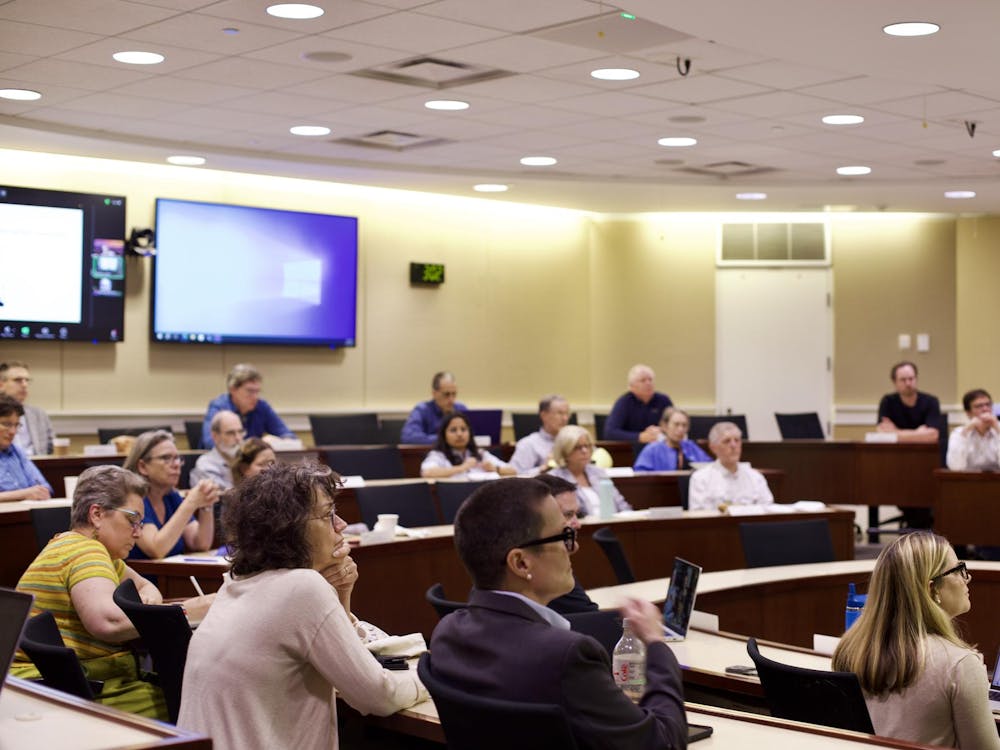A week after the start of the semester and following the season’s second snowfall, Department of Medicine Chair Mitch Rosner discussed the COVID-19 spread on Grounds and the different set of challenges winter would bring in an interview with The Cavalier Daily.
Since the interview, where Rosner initially spoke about the limitations of winter on outdoor gatherings, the University has banned all in-person gatherings on and off Grounds and closed recreational facilities and libraries on Grounds. The most common close-contact indoor settings on Grounds have become residence halls, dining rooms and in-person classes.
The University banned all in-person gatherings Feb. 16 after two days of record-breaking COVID-19 case numbers — 121 new COVID-19 cases were reported Feb. 15 and 229 new cases were reported Feb. 16. The previous high was 59 new cases on Sept. 17 following a testing backlog.
In-person classes, however, will continue with additional safety measures to limit congregation before and after classes. This semester, 27 percent of classes offer an in-person component.
Because of the mask-wearing guidance in place for all in-person instruction — students are required to wear masks at all times — Rosner feels that classrooms are the safest of those three settings. According to Rosner, when the University conducted contact tracing among people in shared classrooms, there was no evidence of significant spread in a classroom environment.
“I think that’s predicated on a couple of things,” Rosner said. “The students are all wearing masks, they’re distanced, we have enhanced ventilation in the classrooms [and] professors are behind plexiglass. I think if you do all those things it seems like the risk in a classroom is probably low.”
Rosner said that residence hall environments are much more conducive to COVID-19 spread.
“Obviously living in close proximity to people is probably the highest risk,” Rosner said. “It was not uncommon for suites of students to get infected at the same time or roommates to get infected, so those are high risk situations that are really hard to mitigate.”
From Feb. 3 to Feb. 8, 17 positive cases were identified in Gibbons dormitory, and all residents were asked to quarantine in their rooms for 24 hours on Feb. 8 so that an additional round of testing could be conducted. No additional positive cases were found, and students were permitted to leave the building on the morning of Feb. 10.
The situation inside dining rooms, on the other hand, was not as safe as socially distanced in-person instruction but not nearly as high-risk as residence halls, Rosner said.
Due to the new regulations, dining rooms are open and pick-up options are available, but in-person seating is limited to two people per table.
“You’ve gotta take your mask off to eat, but again, if you are keeping distance [and] you’re not there for a prolonged period of time, it’s probably lower than living with somebody but probably intermediate between [being] with someone in a classroom,” Rosner said.
In addition to requiring students to undergo weekly prevalence testing this semester, the University has increased the number of days that positive students have to wait before being tested again from 90 to 150 days, in accordance with evolving studies on the matter.
“We were finding that there were, in fact, people that remain positive still after 90 days,” Rosner said. “Most importantly, the data now is pretty good that there are no reinfection cases that can be identified before 150 days. So, the fact that we knew that there was continued shedding of remnant particles without any risk and that there are no documented cases before 150 days of reinfection made us pretty comfortable that we could move that out.”
Beyond current testing and case data, the University’s public health team has one semester of experience to fall back on and can take lessons from their own successes and struggles in the fall. Their two primary takeaways, Rosner said, were that obedience to public health guidelines around mask wearing, social distancing, gathering sizes and good hygiene were critical to stopping the spread and that implementing prevalence testing “on a cadence” enabled the University to detect asymptomatic cases and cut off chains of transmission. He also mentioned the importance of pre-arrival testing in allowing both semesters to get off to a better start.
“Having people not come back who were harboring asymptomatic infections made a big difference,” Rosner said. “It made life a lot easier for us.”
Between Jan. 1 and Feb. 7, there were 187 positive student tests conducted through pre-arrival testing, but these numbers are not included in the total number of positive student cases. As of Tuesday, there are 853 active student cases in the community — over 650 were from last week.
According to Rosner, discovering cases via LetsGet Checked before students return is part of the reason that the University believes that bringing them back to Grounds has not materially impacted the trajectory of COVID-19 in the broader Charlottesville-Albemarle community.
“We could not detect that there was any demonstrable change in the incidence of infection rates in the [Blue Ridge Health District] when the students came back, other than the student cases,” Rosner said. “When the [Virginia Department of Health] did contact tracings, they also could not detect that there was any impact of the students on cases that were in the community.”
With all of those competing factors in mind, Rosner said that the University’s overall public health strategy is predicated on ensuring the most ideal outcomes for all stakeholders involved.
“The president’s office and the provost’s office are constantly pushing on us to relax guidelines,” Rosner said. “What we really want to be able to do is give students that college experience, the ability to interact, at the same time balancing that against the safety issues. That’s gonna be a tension that’s gonna go on throughout the semester. We’re really cognizant of that and trying to balance that, but our primary responsibility is to maintain everybody’s safety.”







